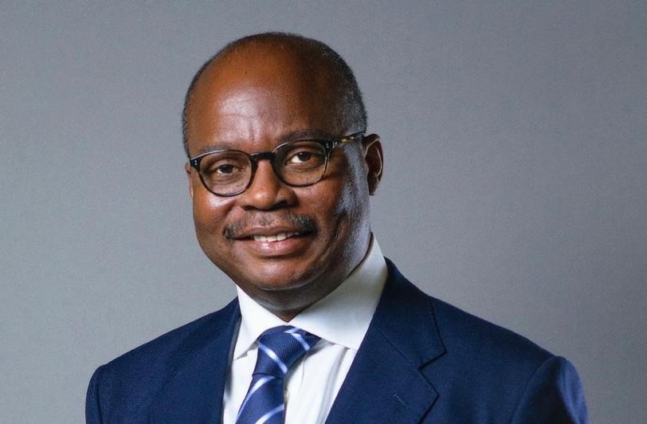The Bank of Ghana has signed a memorandum of understanding (MoU) with the government to halt monetary financing. ‘“The MoU has been finalised and signed,” Governor Ernest Addison told Central Banking today (May 2).
The Financial Times first reported its existence on May 1. The MoU will enter into force once the International Monetary Fund greenlights a pending loan for Ghana, Addison tells Central Banking. Fund staff and the Ghanaian authorities reached a preliminary agreement on the three-year, $3 billion loan last December.
The governor tells Central Banking he believes “Ghana’s deal with [the] IMF will be approved before [the] end of May 2023”.
Ghana’s deal with [the] IMF will be approved before [the] end of May 2023
The MoU is a requirement of a pending loan package agreed with the IMF. Ghana’s government first sought IMF help in mid-2022, after previously saying it would avoid this step.
In a press conference on April 14, IMF African department head Abebe Aemro Selassie said that IMF staff were almost ready to present their package to the IMF board. Fund staff were missing only “the required financing assurances from external creditors”.
Addison tells Central Banking that “the situation has since improved” and “financing assurances from external creditors are expected soon”. Financial adviser Lazard is representing Ghana in debt restructuring talks. Finance minister Ken Ofori-Atta travelled to Beijing in late March for talks on debt, and reported “great progress on all fronts”. After the March 2023 monetary policy meeting, the Bank of Ghana said that the two bodies had “finalised a Memorandum of Understanding on zero financing to the budget, which will be signed shortly”. At the November 2022 monetary policy meeting, Addison spoke of “severe pressure on the Bank of Ghana’s overdraft facility available to government for short-term cashflow management”. As of December 2022, the central bank had provided nearly 18.3 billion cedis ($1.6 billion at current exchange rates) of “loans and advances” to the state. The 2023 budget projects nearly 42 billion cedis of financing from Bank of Ghana in 2022, most of which is “IMF SDR [special drawing rights] resources on-lent to government”. Countries seeking IMF funding often make pledges to halt central bank financing of budgets. Suriname’s central bank and finance ministry signed a similar MoU in July 2021. The IMF granted the country a three-year loan in December that year.
Inflation and the wider crisis
Inflation and the wider crisis Addison told the Financial Times that, “barring any unforeseen external shocks”, he expected inflation to decline in Ghana this year. Inflation peaked at 54.1% year on year in December 2022, and fell sharply in March to 45%.
The Bank of Ghana has more than doubled its policy rate since November 2021, adding 16 percentage points to its key rate in that time. The most recent increase was a 250 basis point hike in March, to 29.5%.
Addison told the FT that the Bank of Ghana hoped to meet its 8% (±2%) inflation target in 2025. High inflation is just one facet of a wider fiscal, monetary and debt crisis. The value of the Ghanaian cedi has eroded, depreciating more than 51% against the US dollar in the last two years.
The country’s gross international reserves fell from $9.7 billion in December 2021 to $6.2 billion a year later, according to Bank of Ghana figures. This would cover 2.7 months of imports, the central bank says.
The net international reserves were just over $2.4 billion in the same month. Ghana defaulted on some of its external debt in December.
The government has also carried out a domestic debt restructuring, with the central bank providing liquidity to commercial banks that participated in the swap.
The finance ministry was reportedly considering securitising its debt to the central bank, according to a Bloomberg report from February. As of September 2022, total public-sector debt was nearly 76% of GDP. About 58% of the debt, equal to about 44% of GDP, is owed to foreign creditors.
Latest Stories
-
ECOWAS deploys observers for Dec. 7 election
6 mins -
73 officers commissioned into Ghana Armed Forces
7 mins -
Impending shutdown of three power plants won’t happen – ECG MD
9 mins -
Ghana shouldn’t have experienced any ‘dumsor’ after 2017 – IES Boss
1 hour -
Lamens flouted some food safety laws in re-bagging rice – Former FDA Boss Alhaji Hudu Mogtari
2 hours -
Afcon exit: Our issue is administrative failure and mismanagement, not lack of talent – Saddick Adams
2 hours -
WAPCo to commence major pipeline maintenance and inspection from November 25
2 hours -
CEO of Oro Oil Ghana Limited Maxwell Commey listed among the 100 Most Influential People Awards, 2024
2 hours -
Power crisis: Amandi is off due to maintenance, not debt – ECG Boss
2 hours -
Votes cast for late Akua Donkor to be declared invalid – Electoral Commission
3 hours -
You can’t keep “incompetent” Otto Addo for the long term – Countryman Songo
3 hours -
Joy FM holds 2024 Prayer Summit for Peace
3 hours -
Lady sues Police and AG over assault in custody
4 hours -
Ghana’s railway sector has been revived under my leadership – Akufo-Addo
5 hours -
Next government must enforce C190 – Women Economic Dialogue Forum
5 hours

